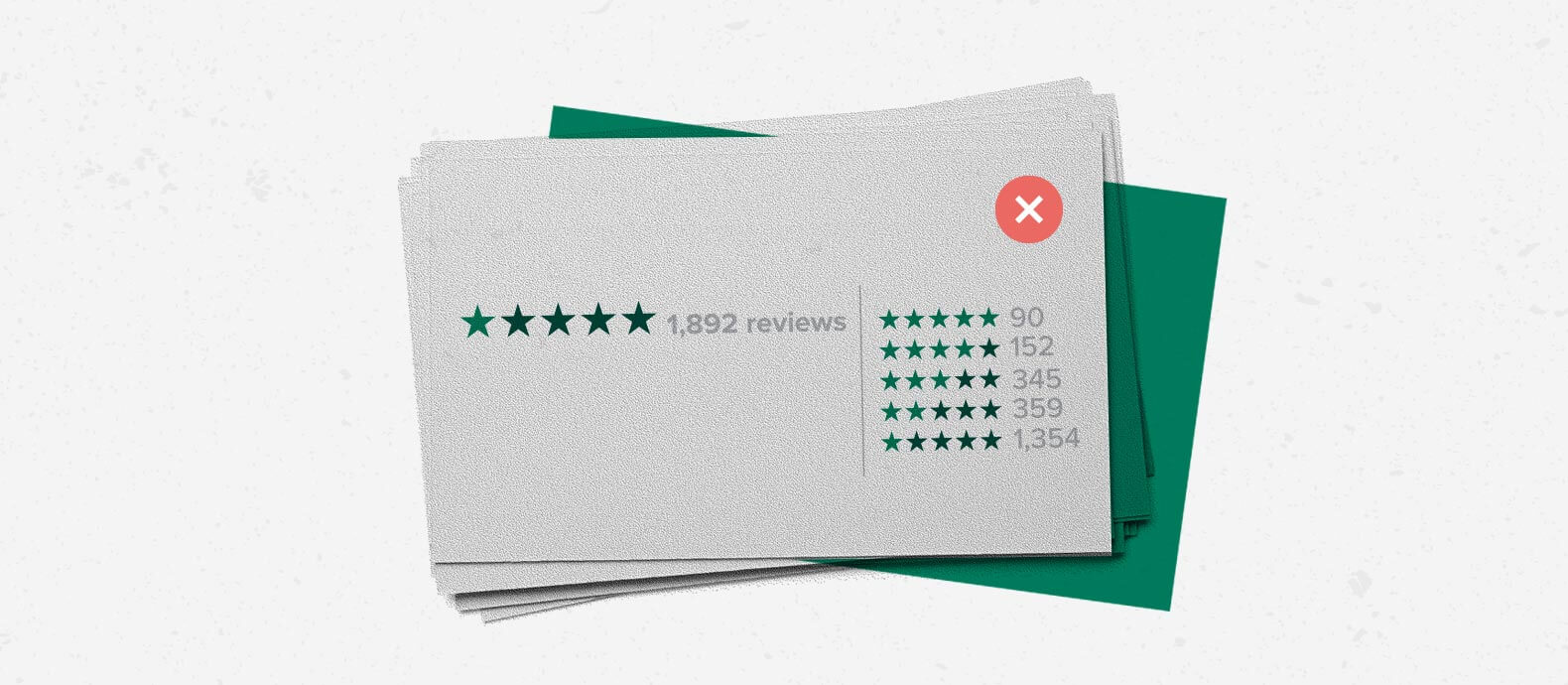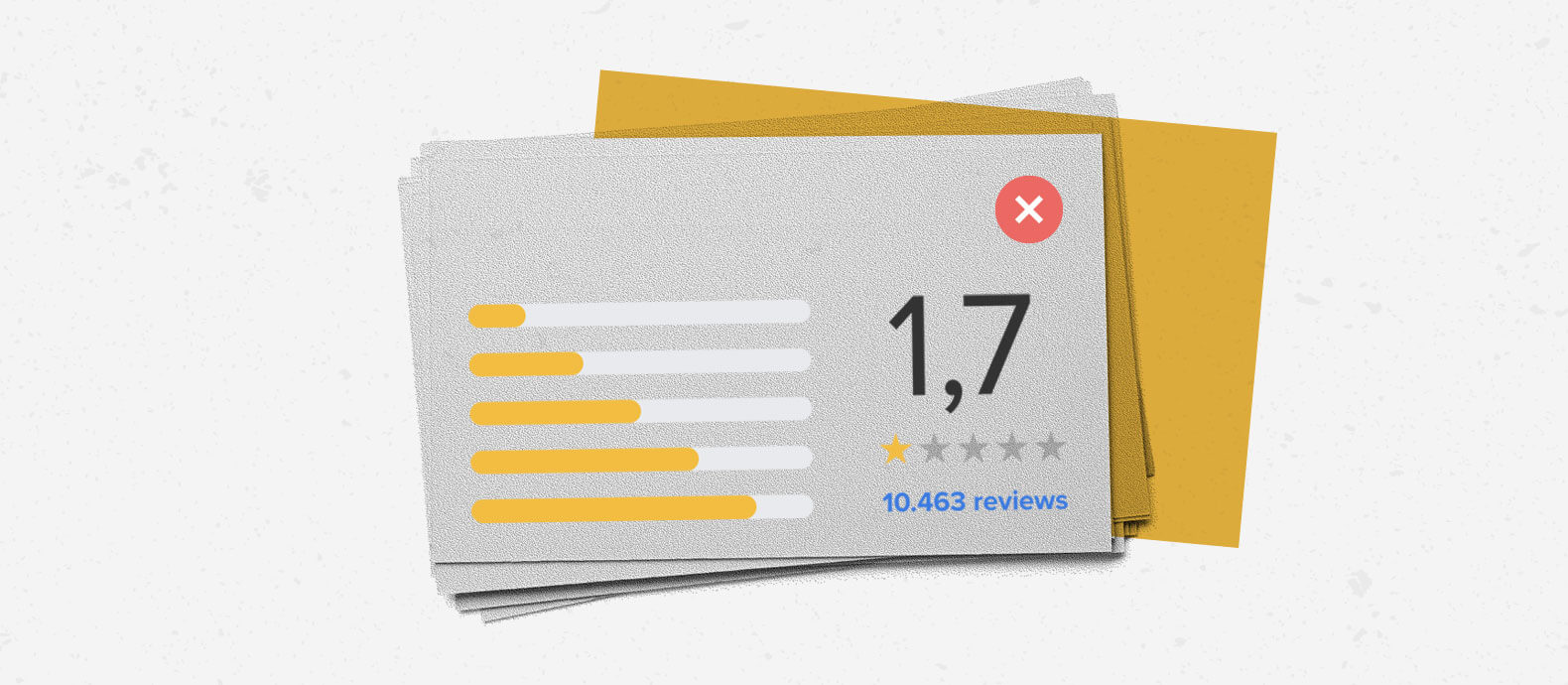Fake Shopify reviews are false accounts written by users who don’t actually have first-hand experience with the product or service they are reviewing. These fake reviews are typically written by brand competitors and online scammers trying to make a specific brand look bad. So, why should your business watch out for fake Shopify reviews on your Shopify store?
Customers are relying on reviews now more than ever to make decisions about the brands they support and the products they purchase. Even one negative review can turn away potential customers and ruin the brand reputation you have worked hard to build for your Shopify store. Read on to learn more about fake Shopify reviews, and the steps you can take to protect your brand reputation and revenue.
Summary:
- Importance of Shopify reviews
- How to spot and take down fake Shopify reviews
- Safeguarding your brand from impersonators and counterfeits
How important are reviews on Shopify?
In the world of ecommerce, reviews can make or break the success of your business. Positive reviews improve your Shopify store’s search engine optimization (SEO) and increase the chances of your store appearing in online searches. Reviews also provide social proof for your Shopify store, which is what a majority of online consumers look for when making purchases.
With a growing number of counterfeit products and scam Shopify stores appearing online, consumers rely on reviews to weed out fraudulent businesses from legitimate stores. In a recent Trustpilot survey, 82% of consumer respondents said positive reviews made them more likely to purchase from a brand. Positive reviews provide the social proof consumers are looking for when determining which brands they should support and which products to buy.
You can utilize these consumer trends to your advantage by encouraging customers to leave reviews and showing potential customers you are a trustworthy brand. On the other hand, it’s essential to keep a close eye on your Shopify reviews, because negative reviews pose a great threat to your business.
Even a single negative review can deter shoppers from making a purchase in your Shopify store. In fact, a recent ReviewTrackers report found that 94% of consumers have avoided a business because of a negative review. Negative reviews will ruin your hard-earned brand reputation if you aren’t careful, and should always be addressed– fake or otherwise.
Why you should watch out for fake Shopify reviews
Competitors and business impersonators aren’t the only individuals writing fake Shopify reviews. Owners of Shopify stores themselves have been known to pay for fake reviews to increase their store’s star rating. Loox is one such app providing paid Shopify reviews, but just because these apps are growing in popularity doesn’t mean you should use them.
Brand owners should avoid using paid review apps. Here are a few reasons why:
Fake reviews are illegal and against Shopify community rules
Yes, you read that right: fake reviews are illegal and prohibited by Shopify. The Legal Information Institute states that “unfair or deceptive acts and practices,” within commerce, such as fake reviews, are unlawful and at-risk legal penalties (15 U.S. Code § 45). If you’re still thinking that paying for fake reviews comes without consequence, think again.
Not only do platforms like Shopify and Google prohibit fake reviews– they also have strong penalties for doing so. Shopify can shut down your entire store for posting fake reviews, and Google can de-index you and stop your business from appearing in search results. It may seem like paying for reviews will help your Shopify store get ahead, but the risk certainly isn’t worth the reward.
It hurts brand integrity
Brand integrity is vital to build a solid reputation and gain loyal customers for your Shopify store. While paying for fake Shopify reviews may help boost your social proof in the short term, it completely diminishes your brand integrity. Consumers don’t like feeling lied to, and that’s exactly what you are doing when you pay for fake reviews.
People can tell
A majority of the apps selling fake reviews simply recycle the same robotic-sounding reviews consumers have likely seen already on other products and stores. Fake reviews on Shopify tend to be extremely short, 5-star reviews so vague they could apply to any product on the internet. Simply put, these canned-response reviews are easy to spot, and most consumers will be turned away after seeing nothing but fake reviews under your products.
How to remove fake Shopify reviews
Even if you are doing everything right and leading your Shopify store with integrity, you may still be the target of fake Shopify reviews. Competitors and online scammers may leave fake negative reviews on your products simply to bring down your rating and make your brand look bad. When this happens, you should act quickly to take down the fake reviews.
To remove fake Shopify reviews and protect your brand reputation, follow these steps:
Disable Automatic Publishing
Prevention is the best way to get ahead of the curve and ensure fake Shopify reviews don’t appear on your products in the first place. You can easily manage the reviews that show up on your products by manually posting each one. To do this, you need to go into your account dashboard and disable automatic publishing in the review settings.
To disable automatic publishing of reviews on Shopify:
- Click on “Apps” in your Shopify dashboard, and then “Product Reviews”
- Select “Settings”
- Find the “Auto-publish” section, and click “Disabled”
- Ensure you click “Save” once automatic publishing has been disabled
Flag the fake review for inappropriate content
If you do find a fake review on your Shopify store, you will want to take it down immediately. You can easily delete reviews within your account by going to the review dashboard and deleting the fake review. However, deleting it doesn’t necessarily mean that the problem will go away.
We recommend reporting fake Shopify reviews by flagging them through the platform. Fraudulent reviews are a violation of the site guidelines, and there is a better chance the poster’s account will be taken down altogether by reporting.
To flag a fake review, simply go to the review dashboard, find the fake review, and click “Report as Inappropriate.” You should be able to provide more information explaining that the review is fraudulent, and Shopify will review it from there. Hopefully, this will be enough to ensure the poster faces consequences and is potentially removed from the site.
How to deal with negative reviews on Shopify
Though they are never fun to receive as a business owner, not every negative review is fake. No matter how great your products are, you’re bound to receive a negative review at some point, and these are just as important to address. These reviews should always be seen as a learning opportunity for you to fix the problem and build a better business.
Here are the steps you can take to deal with negative reviews on Shopify:
Understand where the negative reviews come from
Come at every negative review with an open mind and a willingness to understand and rectify the situation for your customer. What went wrong for them? Are they upset because of the quality of the product, the delivery, or something else? Once you identify the problem, you can offer a solution for the upset customer, and adapt your business to prevent similar issues down the line.
If you are receiving a larger-than-usual amount of negative reviews, it’s even more important to investigate each one. An influx in customer Shopify review complaints is a tell-tale sign that your business is being impersonated by a scam Shopify store.
Catan, for example, realized counterfeit copies of their game were being sold after receiving an influx of negative reviews from confused consumers who’d been scammed. By investigating these reviews, they were able to identify the counterfeit products and work to take them down.
If you are seeing counterfeit products of your brand, you should take immediate steps to take down impersonators and prevent future infringement. Consider registering your IP, managing and protecting your IP portfolio, and investing in brand protection software that can help protect your products and content. Ensuring your IP is closely monitored online is the best way to protect your revenue and brand reputation.
Reply/reach out to the customer as soon as possible
The worst thing you can do with a negative review is to ignore it and let it continue discouraging customers from buying your product(s). Reach out to the poster as soon as you see the negative review to learn if there is any way you can rectify the situation.
If you can’t, replying with a simple “thanks for your feedback– we are working to ensure this doesn’t happen again,” can go a long way. A reply like this will show prospective customers that you take reviews seriously and are at least attempting to provide a great experience for customers.
Learn what can be improved
Don’t just say you are going to fix the problem– learn from your mistakes and make positive changes in your business model. Whether that means working with a higher-quality supplier or simply improving communication, every step you take to fix the situation will improve your business overall.
What’s next
Your brand’s reputation is the biggest selling point for new customers, and it’s vital you protect it by investigating negative reviews.
You could have the best product in the world, but it won’t sell if you have a terrible brand reputation. Investigating negative ads and monitoring for counterfeit products is the best way to safeguard your brand reputation and continue growing your business. If you have stored on other platforms like Amazon, check out our guide for tips on how to safeguard your business and reputation.
You can’t afford to lose the trust of your customers. Learn more about how you can protect your brand reputation with Red Points.





